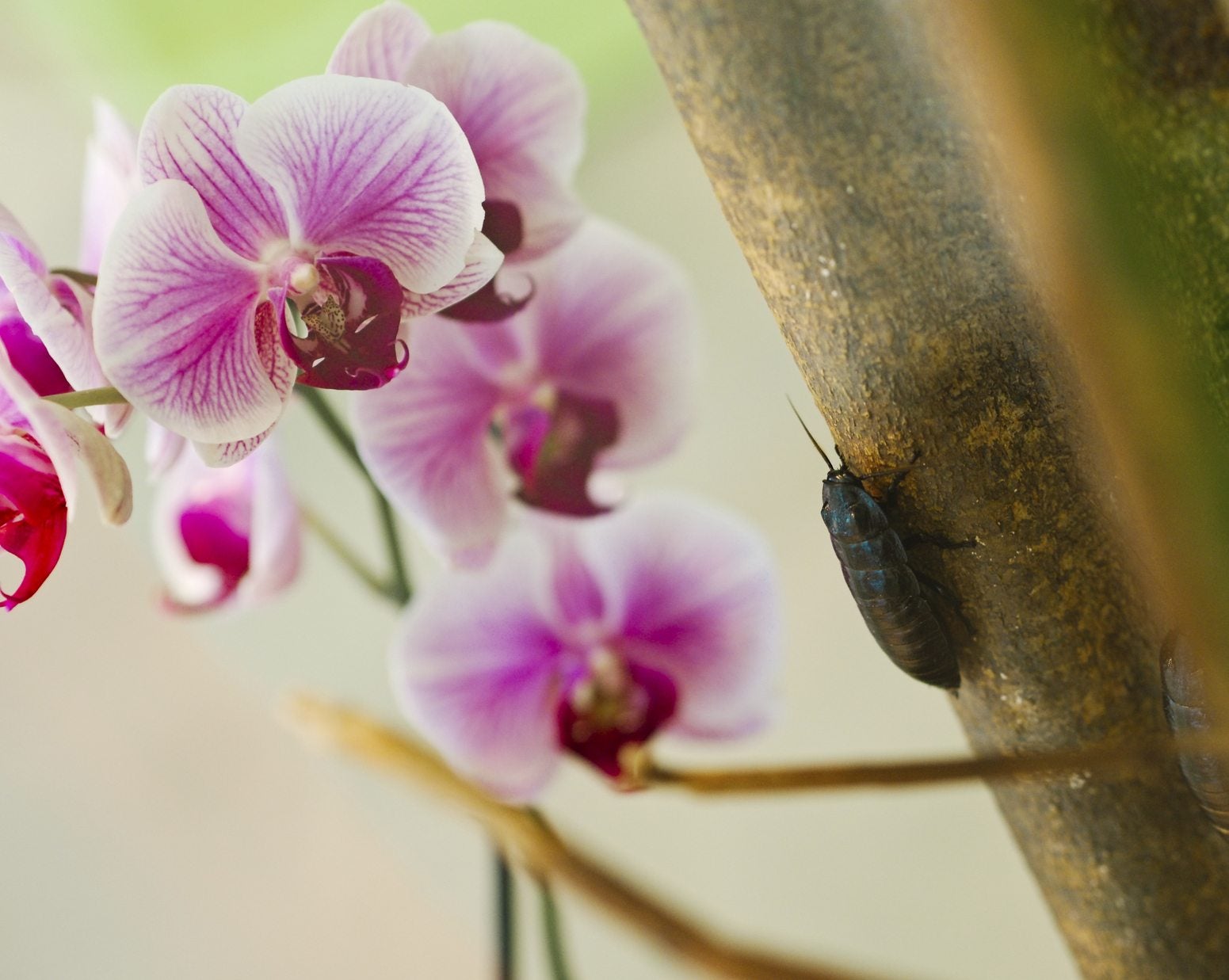Controlling Pests On Orchid Flowers – Tips On Managing Orchid Pests


Growing orchids can be an addictive experience. These lovely flowering plants can be a bit fussy about their conditions and care, but the effort is worth it when you see the astounding blooms. There are several orchid flower pests that can seriously diminish the plant's health and ability to produce the flowers for which they are known. Pests on orchid flowers may be sap feeders or chewing insects, but the damage they do can reduce plant vigor and, in some cases, even kill the plant. Identifying the villains and providing orchid pest control in a timely manner could save your plant.
Types of Pests on Orchids
Orchid flower pests are a collector's nightmare. There are any number of nasty insects that can wreck the appearance and health of your plant. Recognizing which insect is attacking your orchid is key to managing orchid pests. Once you know which insect is causing the damage, you can successfully fight back. Pests on orchid flowers fall into two categories: sap sucking and chewing. Sap sucking insects remove plant sap which is necessary for the plant to fuel itself causing general malaise and leaf, stem, and flower problems. These include:
- Aphids: Aphids are common on many types of plants. These soft-bodied insects can transmit disease and cause leaf, young shoot, and flower damage.
- Scale: Scale is harder to see but is recognized as bumps on the stems and other parts of the plant. Severe infestations cause yellowing and leaf drop.
- Mealybugs: Mealybugs are fuzzy, cottony-looking insects that usually hide in the leaf axils. Symptoms are similar to scale.
- Thrips: Thrips are almost impossible to see and deform leaves and blossoms, while whiteflies look like their name implies and attack all growth.
- Spider mites: Spider mites are also tiny, but you can see their webs on the plant. Their feeding behavior reduces chlorophyll.
Chewing insects of orchids usually prey on plants grown outdoors.
- These might be snails and slugs, whose chewing behavior leaves holes and chunks out of leaves. These pests are primarily nocturnal and you may need to wait until dark to find them. The easiest method of orchid pest control with these mollusks is to hand pick them or use diatomaceous earth, which is non-toxic and effective.
- Caterpillars make Swiss cheese out of leaves and even eat buds. Managing orchid pests like these requires applications of Bacillus thuringiensis, a natural pesticide.
- On rare occasions, cockroaches or grasshoppers may invade outdoor plants. Use cockroach baits in the area and bait grasshoppers with molasses.
Orchid Pest Management
There are many non-toxic methods of control that can manage these pests. Sucking insects are often just washed off the plant. Pyrethrins or horticultural oil sprays are also effective. Mites are most active when the conditions are hot and dry. Increase humidity and, if you can, move the plant where it is cooler. Keep all leaves and other debris cleaned up so pests don't have hiding places. Keep orchids away from host plants such as citrus, other flowering plants, eucalyptus, beans, and taro. The best defense is a healthy plant. Healthy plants can withstand some pest activity without significant loss of vigor. Another tip about orchid pests and management is to inspect plants daily. The sooner management begins, the better the outcome and the less damage the orchid will sustain.
Gardening tips, videos, info and more delivered right to your inbox!
Sign up for the Gardening Know How newsletter today and receive a free copy of our e-book "How to Grow Delicious Tomatoes".

Bonnie Grant is a professional landscaper with a Certification in Urban Gardening. She has been gardening and writing for 15 years. A former professional chef, she has a passion for edible landscaping.
-
 Looking For Plants To Give You The Soft And Fuzzies? Try These 5 Fuzzy Leaf Plant Options
Looking For Plants To Give You The Soft And Fuzzies? Try These 5 Fuzzy Leaf Plant OptionsLovers of texture, drama, silver foliage and tactile plants will adore these special sensory garden additions. These fuzzy leaf plant options will leave you all aglow
By Susan Albert
-
 Get Ready For A Summer Of Hummers! Grow These Full Sun Hummingbird Plants and Flowers
Get Ready For A Summer Of Hummers! Grow These Full Sun Hummingbird Plants and FlowersIf you’re lucky enough to enjoy a sunny backyard, make sure you are maxing out on your pollinator opportunities and grow these full sun hummingbird plants and flowers
By Tonya Barnett